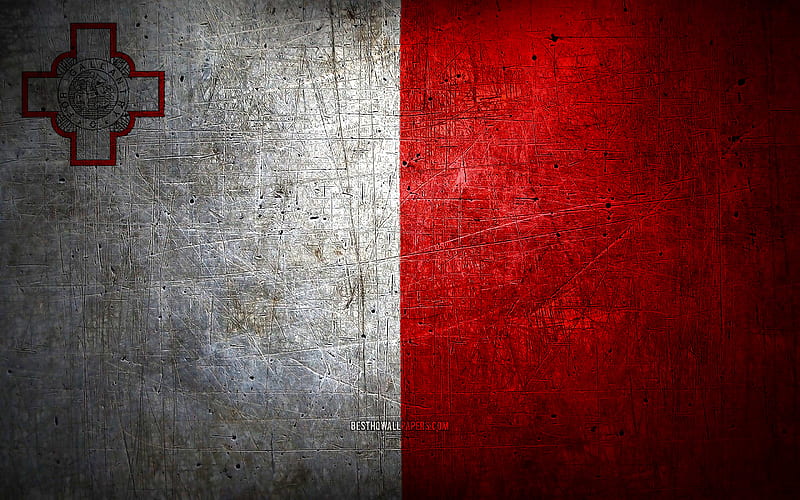Malta is known for being ahead of the curve when it comes to blockchain and financial technology. It is quickly becoming a centre for stablecoin payments. Its clear rules and thriving digital ecosystem have made it a great place for new ideas to grow, especially in the areas of E-Gaming and payments for digital nomads. Malta is becoming a leader in crypto adoption in the European Union as more platforms add stablecoins like USDC and USDT.
Regulatory Framework Supporting Stablecoin Adoption in Malta
Malta's strong regulatory environment is what makes it so good at attracting crypto-related businesses. The Malta Financial Services Authority (MFSA) is in charge of regulating all financial services and virtual financial assets (VFAs). Malta has changed its laws to match EU-wide standards now that the European Union's Markets in Crypto-Assets (MiCA) framework is in place.
MiCA makes it clear what stablecoin issuers and crypto service providers must do, from rules about how to run their businesses to ways to protect consumers. This legal clarity gets rid of the regulatory uncertainty that often comes with digital assets, which lets businesses work with confidence.
StablR is a well-known example. It is a Malta-based stablecoin issuer that has an Electronic Money Institution license and fully follows MiCAR standards. This guarantees strong reserve backing, clear operations, and financial stability—three things that are very important for gaining the trust of businesses and consumers.
Some of the benefits of this clarity are:
- Clearer regulatory oversight that makes people trust stablecoin issuers more.
- Consumer protection and lowering risk in case the market is unstable.
- Encouragement for innovation, enabling startups and established companies to develop new stablecoin-based financial tools.
Also read: Stablecoin Payments in Croatia: Digital Dollars for the Tourism and Tech Sectors
Stablecoins Transforming Malta’s E-Gaming Industry
Malta's E-gaming industry is well-known throughout the world and is home to a diverse range of online casinos, betting sites, and gaming technology suppliers. Malta has established an ecosystem that is open to new technologies, such as blockchain and cryptocurrency payments, because it was one of the first countries to regulate online gaming.
Stablecoins are quickly becoming popular in Malta's gaming sector. Their price stability, in contrast to that of traditional cryptocurrencies, makes them perfect for gaming transactions, where speed and trust are crucial. While operators steer clear of the high volatility risks associated with assets like Bitcoin or Ethereum, players enjoy the convenience of inexpensive, almost instantaneous deposits and withdrawals.
Numerous platforms are testing blockchain-native solutions, like decentralised exchanges (DEXs) based on stablecoins like DUSD, which provide fully on-chain and transparent payment systems.
These innovations bring three main advantages:
- Operational efficiency: Instant, borderless payments reduce reliance on traditional banking networks.
- Increased security and transparency: transactions based on blockchain technology are unchangeable and verifiable.
- Regulatory compliance: By integrating Stablecoin with MiCA, transactions are guaranteed to adhere to legal requirements.
Additionally, stablecoin adoption is also improving user experience by reducing withdrawal times, lowering fees, and simplifying cross-border payments. These aspects are crucial for preserving a competitive edge in the global gaming market.
Digital Nomads and Stablecoin Payroll Solutions in Malta
More and more freelancers, remote workers, and entrepreneurs are moving to Malta because of its digital nomad visa. They want to live in the EU and enjoy tax and lifestyle benefits. When working from home, these professionals often have trouble with traditional banking systems. For example, they have to pay a lot of money to exchange currencies, transfers take a long time across borders, and they can't always access local financial infrastructure.
Stablecoin payments offer an ideal solution, enabling digital nomads to:
- Receive salaries and freelance payments instantly from anywhere in the world.
- Stablecoins linked to major currencies like the U.S. dollar (USDC and USDT) can help you avoid expensive currency conversions.
- Maintain liquidity and financial flexibility through global wallet access.
Applications like Fuse Wallet make it easy to switch between fiat and stablecoins, which makes it easier to spend money and do business every day. Meanwhile, platforms like TransFi make it easier to convert fiat to crypto, which makes stablecoin payroll in Malta available to both businesses and individuals.
Tax breaks are another reason why people want to move to Malta. The Nomad Visa program lets digital nomads pay no income tax in their first year and a flat 10% rate after that. Malta is one of the best places in the EU for remote workers who are paid in crypto, especially when you consider how cheap stablecoin payments are.
TransFi’s Role in Malta’s Stablecoin Economy
Infrastructure providers like TransFi are a big reason why stablecoins are growing in Malta. TransFi connects traditional financial systems with blockchain-based assets, helping both people and businesses.
TransFi makes it easy for E-Gaming platforms to directly integrate stablecoin payment solutions. This lets players deposit and withdraw money instantly while still following Maltese laws.
TransFi makes it easy for digital nomads and remote workers to convert fiat money to stablecoins quickly and cheaply. This makes it easier to manage freelance income, pay bills, and even pay crypto employees in Malta. TransFi plays a key role in making stablecoin payments more common in Malta's economy by giving them these rails.
Key Challenges and Considerations:
Malta still has problems with scaling stablecoin payments, even though they are being used quickly.
- Lack of infrastructure– As crypto payment platforms grow, they need to be easier to use and accepted by more merchants.
- Liquidity and redemption risks– It is important for stablecoin issuers to keep strong reserves in order to keep the market's trust.
- Issues with the transition to full MiCA compliance– Businesses may have to adapt, which could slow down innovation for a while.
- Systemic risk concerns– The global debate over how stablecoins will affect banking and monetary policy is still going on and needs close monitoring.
New technologies, like blockchain interoperability and cross-chain payment solutions, are coming out to help solve these problems. For instance, researchers are looking into UTXO-based sharding as a way to improve transaction speed and network scalability while keeping security high.
Also read: Canada's Payment Rails & How They Work - The Complete Guide
Future Outlook for Stablecoin Payments in Malta
Malta is a great place for blockchain innovation and has a friendly regulatory environment. This means that stablecoin adoption will continue to grow. Current trends suggest that the technology will grow beyond e-gaming and digital nomads, with possible uses in treasury operations, remittances, and retail payments in general.
Key events that will shape the future include:
- Partnerships like StablR’s collaboration with Kraken are boosting liquidity and cross-border reach.
- Integration by major financial networks like Mastercard, which is looking into payment products linked to stablecoins.
- Wallets and DeFi tools are still being improved so that people can use stablecoins to pay for things every day.
Malta could become Europe's top place for blockchain-based financial services if it keeps improving its rules and investing in infrastructure that is friendly to cryptocurrencies.
Conclusion
Stablecoins are key to transforming Malta’s financial services ecosystem and will facilitate secure and efficient payment transactions. From Malta e-gaming crypto usage to digital nomad payments in Malta, these advancements underscore the country’s status as a progressive digital economy hub. Though there are infrastructural and regulatory hurdles, initiatives like TransFi and progressing EU standards are paving the way for powerful, scalable adoption.
The growing stablecoin ecosystem in Malta presents a vision for a future in which crypto salaries, stablecoin payroll, and cross-border remittances gain traction as the norm, in line with the country’s aspirations to continue leading the way as a Blockchain Island in Europe.
FAQs:
1. Are stablecoins allowed in Malta?
In order to ensure legality and consumer protection, stablecoins are regulated under the MFSA and in line with the EU's MiCA framework.
2. Is it possible for digital nomads in Malta to receive payment in USDC or USDT?
Indeed, a lot of remote workers in Malta get paid in cryptocurrency, using wallets and payment systems to exchange stablecoins for cash when necessary.
3. Which online gaming sites take stablecoin payments?
In order to increase speed and cost effectiveness, a number of Malta-based gaming operators are implementing stablecoins for player deposits and payouts.
4. How does TransFi support the adoption of stablecoins?
Businesses and individuals can easily implement stablecoin payroll and cross-border transfers thanks to TransFi's ability to bridge fiat and cryptocurrency payments.
5. What taxes are imposed on Malta's stablecoin users who are digital nomads?
Subject to compliance requirements, digital nomads pay 0% tax in their first year and a flat 10% tax after that, including income from stablecoins.
Table of Contents
Suggested Article
Explore our products

Make global payments at the speed of a click

Accept payments, remove borders.

Unlock Seamless Digital Currency Transactions Anywhere









.png)














